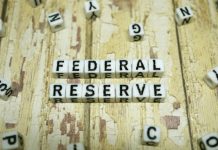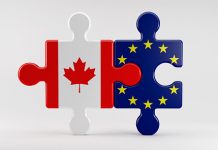Markets
Another US data beat. Retail sales jumped 3% m/m (headline series) in January after two weak months end last year. That’s more than the 2% expected. All 13 categories printed an increase in sales. The control group excluding food services, gas, building materials and cars also rose by a more-than-expected 1.7% m/m. This series is viewed as more indicative for consumer spending. Demand is still robust and has the excellent shape of the labour market to thank for. On a sidenote, the Empire Manufacturing index also recovered by more than anticipated, from -32.9 to -5.8. The recent (exceptionally) strong US data mean the Fed’s work isn’t done, in our view (which is increasingly shared by Fed governors) not even when it hit the December dot plot terminal rate of 5-5.25%. US yields added a few more bps to their earlier advance before paring gains back to pre-retail sales’ levels. Current changes amount to 2.6-3.8 bps across the curve. European yields gain a few bps as well. The euro 10y swap yield is testing the symbolic 3% barrier for the first time since the start of the year. The dollar benefits. Trade-weighted DXY flirted with the 104 recent high. A break didn’t occur though with a not too bad equity sentiment capping the greenback’s gains. EUR/USD is intensively testing support at 1.068. A close at or below that level implies losing the upward sloping trend channel.
UK inflation decelerated more than expected in January, wrongfooting those anticipating a US-like surprise. Price growth eased from 10.5% to 10.1% (10.3% expected). The core gauge fell from 6.3% to 5.8% compared to the 6.2% estimate. The Bank of England put the next rate hike conditional on “evidence of more persistent inflationary pressures”. But among the indicators it has on its watch list aside from inflation, is “tightness of the labour market”. We currently expect two more 25 bps rate hikes to 4.5%. Despite the setback today, UK money markets do too. Gilt yields ease 5.7-10 bps across the curve after surging by double digits (starting with a “2” at the front end) yesterday. Sterling takes a hit and by doing so EUR/GBP’s upward sloping trend channel was saved by the bell. EUR/GBP surpasses 0.8867 resistance and comes close to a test of the next one at 0.8897. Cable (GBP/USD) tests 1.20 support, with dollar strength (after US retail sales) adding to the downleg.
The Kingdom of Belgium successfully auctioned a €5bn 30y (OLO98, June 22, 2054) bond, priced at OLO95 +8 bps compared to +10 bps area guidance. Books ran above €34bn. With today’s syndication, the debt agency has completed about 28% of its €45bn OLO funding need. With the dual debt offering, the Slovak Republic placed a €2bn 12y (Feb 23, 20235) bond, priced at MS+80 (vs +95 guidance) and a €1.5bn 20y (Feb 23, 2043) bond, priced at MS+120 (vs +130 guidance). Books for each bond sale ran above €6.7bn and €5.5bn respectively.
News & Views
According to Statistics Poland, inflation in January reaccelerated to 2.4% M/M and 17.2% Y/Y (from 0.1% M/M and 16.6% Y/Y). The rise was mainly driven by a 6.0% M/M jump in costs for dwelling, including a 10.4% monthly rise in prices for electricity, gas and other fuels as some of last year’s tax cuts were reversed. Food prices increased 1.9% M/M. KBC estimates that core inflation rose to about 12% (11.5% in December). Poland’s central bank last week left its policy rate at 6.75%. The NBP hasn’t officially ended its rate hike cycle. But governor Glapinski assessed the current level as appropriate to bring inflation back to the 2.5% (+/- 1.0%) target. The zloty since end last year weakened from EUR/PLN 4.63 to almost EUR/PLN 4.80 earlier this week. It rebounds slightly further today (4.7575).
Total Norwegian GDP increased 0.2% Q/Q in Q4 2022 compared to 1.3% in Q3. Mainland activity grew at 0.8% Q/Q, the same pace as in Q3. Growth was mainly driven by final consumption expenditure (5.9% Q/Q). Government consumption rose 0.9% Q/Q. Gross fixed capital formation was 2.1% higher. Exports fell 0.8% in Q4, mainly due to gas and oil while imports increased 2.6%. Despite strong fundamentals, the Norwegian krone since September was caught in a weakening trend against the euro. The Norges Bank kept a gradual tightening approach. At the January meeting it left its policy rate unchanged at 2.75%, but signaled an additional step of 25 bps in March. Strong demand and persistent high inflation (Jan 7.0% Y/Y) leave the door open for additional steps post March. After a brief NOK rebound over the previous week (post ‘hawkish’ Riksbank), the krone fails to extend gains (EUR/NOK 10.9175).













